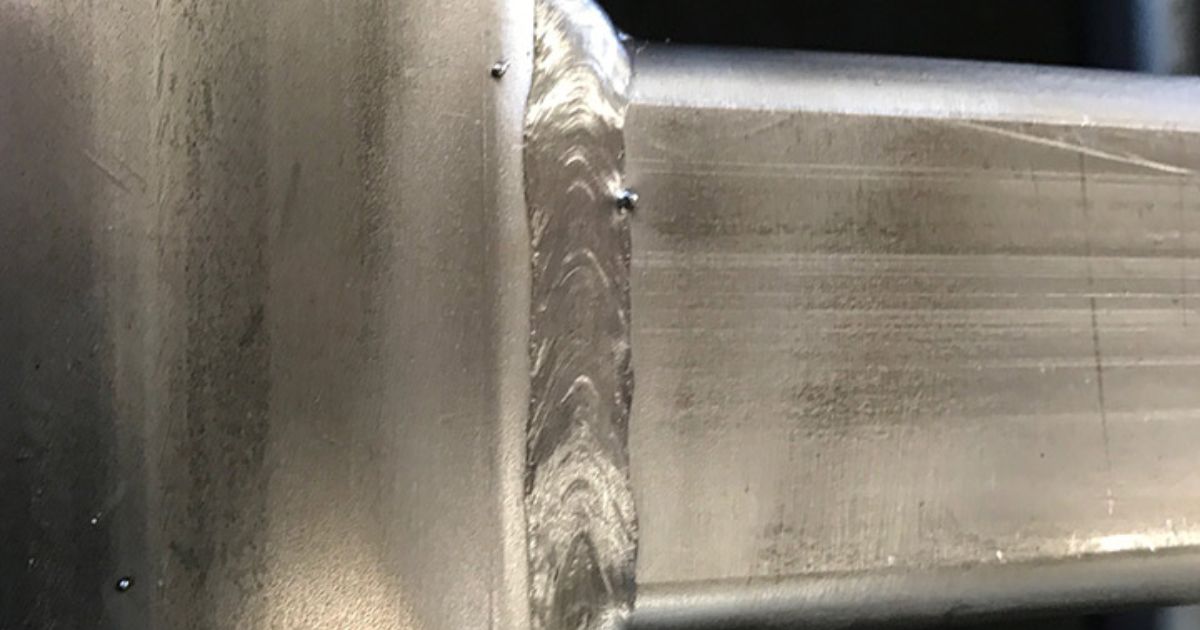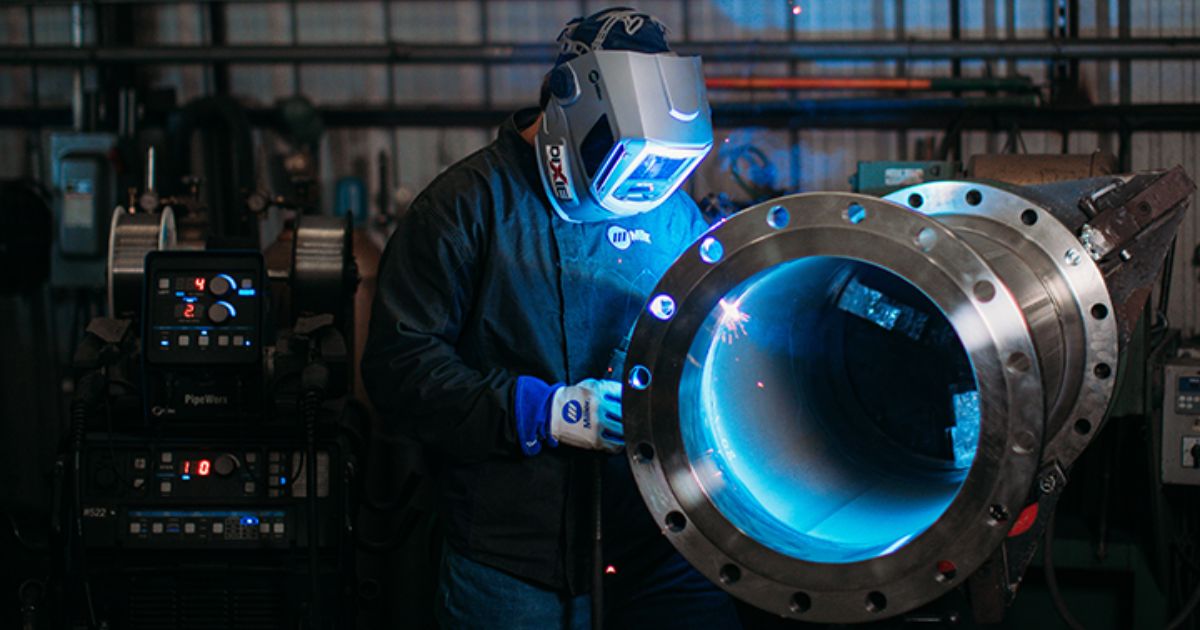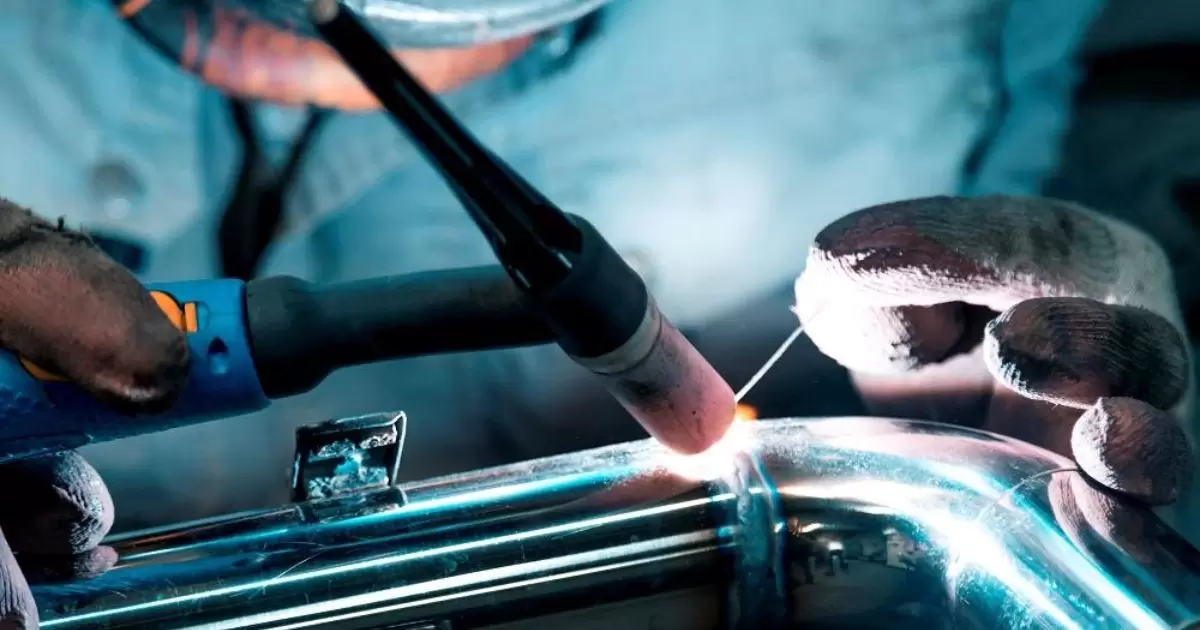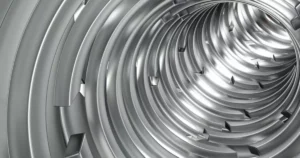MIG welding stainless steel is similar to joining metal parts with an advanced glue gun. It functions by melting and fusing stainless steel components with the help of electricity and a specific wire. Consider it as forming robust connections between metal components, such as building blocks, to create functional objects like equipment or artworks.
Can stainless steel be MIG welded? Stainless steel components can be joined together in an incredibly fascinating way with MIG welding, or metal inert gas welding. It’s similar to using magic to melt metal and form amazing things.
Can stainless steel be MIG welded? MIG welding is an amazing technique that joins stainless steel components by fusing them with electricity using a unique wire. It’s like having a powerful tool to forge tight connections between metal components, making it easy to build everything from tiny devices to large structures. Prepare to create amazing things with a weld.
Challenges of Welding Stainless Steel
Contamination Concerns
Stainless steel welds easily corrode if contamination occurs. Grease, oil, paint markings, or iron particles entering the weld can lead to rust and weak spots. Thorough cleaning is vital.
Heat Control
Stainless steel conducts heat poorly. Localized heat input can cause distortion. Welding requires higher amperage yet lower speeds to balance penetration with heat control.
MIG Welding Machine Setup
Correct machine settings help overcome stainless steel’s welding difficulties. Can you weld stainless to mild steel? Consider the following:
Wire Feed Speed
Set slightly faster than mild steel since stainless has higher thermal conductivity. Start around 300 ipm.
Voltage
A higher voltage of around 28-32V maintains the arc despite poor conductivity. Lower heat input prevents distortion.
Polarity
Use direct current electrode positive (DCEP). It focuses heat on the wire not the workpiece for better control.
Filler Metals
Choosing suitable filler metals is vital:
Wire Types
Use 308L or 316L wires matching the stainless steel alloy. Their low carbon prevents carbide precipitation.
Wire Diameter
Larger 0.045” diameter wires suit stainless steel’s higher amperage needs. They resist overheating better.
Shielding Gases
Gas Mixes
Argon + 2-5% oxygen mixes give good oxidation resistance for austenitic stainless steels. Or use He/Ar/CO2 tri-mixes around 20-25 CFH flow.
Technique
The proper technique creates quality stainless welds:
Cleaning and Preparation
Degrease and scrub surfaces to remove contaminants. Stainless brush tools avoid iron contamination.
Welding Motion
Use flat or horizontal positions. Vertical/overhead welding risks heavy spatter and contamination.
Travel Speed
Go slightly faster than mild steel. Move steadily to prevent the arc from lingering in one spot causing burn-through.
Common Mistakes
- Insufficient cleaning causes contamination and corrosion
- Excessive spatter leading to defects
- Overheating and distortion due to too-high heat input
- Poor gas coverage from low flow rates or breezes
- Welding over grease, paint markings, or iron particles
The Allure of MIG Welding Stainless Steel
MIG welding chrome steel may additionally seem intimidating because of the material‘s unique residences, however, it’s an ability that can be mastered with exercise. The method offers efficiency and the potential to handle the ramifications of alloys, making it a valuable method for both hobbyists and specialists. By understanding the nuances of stainless steel and adjusting your approach accordingly, you can achieve high-quality results.
Understanding Stainless Steel for MIG Welding
Chrome steel is an alloy regarded for its corrosion resistance, that is furnished by a chromium oxide layer that bureaucracy on the floor. whilst MIG welding chrome steel, it’s important to hold this protecting layer to make sure the cloth retains its anti-corrosive properties. right, practice, gadget setup, and welding approach are key to successful MIG welding of stainless steel.
Table of MIG Welding Stainless Steel Parameters
The following table will come under the heading “Optimizing MIG Welding Parameters for Stainless Steel”:
| Parameter | Description | Recommended Setting |
| Gas Mixture | Shielding gas protects the weld from contamination. | Use a tri-mix gas (Helium, Argon, CO2) or Argon with 2-3% Oxygen. |
| Filler Material | The type of filler metal should match the stainless steel grade. | Use a matching stainless steel filler wire, such as 308L for 304 stainless steel. |
| Voltage | Controls the heat input and arc characteristics. | Adjust according to material thickness and joint type. |
| Amperage | Determines the welding current. | Set based on the thickness of the material and the position of the weld. |
| Wire Speed | Affects the delivery of the filler material to the weld pool. | Calibrate to achieve a stable arc and proper penetration. |
| Travel Speed | The rate at which the welder moves along the joint. | Maintain a consistent speed to avoid overheating or lack of fusion. |
FAQs:
Can I weld stainless steel with regular MIG wire?
Sure, you can weld chrome steel with a normal MIG cord, but the usage of a stainless-steel MIG cord is suggested for higher outcomes.
Is MIG or TIG better for stainless steel?
TIG welding is normally considered better for stainless steel due to its precision and control over warmth input.
Can you weld stainless steel with a no-gas MIG welder?
Yes, you may weld stainless steel with a no-gas MIG welder using a flux-cored stainless steel cord.
Why stainless steel Cannot be welded?
Stainless steel can be welded, however, certain precautions want to be taken due to its susceptibility to warmness distortion and the ability for corrosion if now not nicely welded.
Can I weld stainless with flux?
Yes, you could weld stainless steel with flux through the use of a system known as flux-cored arc welding (FCAW), which makes use of a flux center to protect the weld pool from atmospheric contamination.
Conclusion:
Because of the chromium content, stainless steel resists corrosion. It’s important to correctly set up the equipment for stainless steel while MIG welding. To ensure that the weld doesn’t corrode, use a specific wire and gas. To ensure a high-quality weld, make sure everything is spotless.
Stainless steel is tougher to weld than regular steel. As it gets hotter, a specialized torch is required. Additionally, it modifies the way the welding wire feeds. This implies that you must carefully adjust the power and speed. Till you achieve quality welds, proceed cautiously and gently.
Good MIG stainless steel welding requires practice. To test your setup, start with scrap metal. Examine every weld for areas for improvement. After your welds are good, you can










